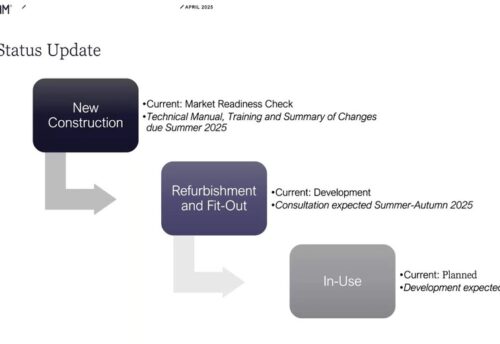
- November 16, 2021
COP26: Success or failure?
After two weeks of negotiations, around 200 countries signed up to the “Glasgow Climate Pact” which commits them to reduce coal use and strengthen emissions-cutting targets in addition to delivering the required climate finance to developing nations. This agreement adds to other pledges made during COP26 that include ending deforestation by 2030 and cutting methane emissions by 30% by 2030, amongst others. Although not legally binding, the Glasgow Climate Pact will set the global agenda on climate change for the next decade.
There has been widespread criticism from people, NGOs, companies and developing nations that the pledges agreed to at COP26 fall far short of the actions required to significantly reduce carbon emissions. In contrast, leaders of some of the developed nations have labelled the Glasgow Climate Pact as a “historic” conference that has kept the 1.5°C goal alive. The reality may lie somewhere in between and in this article our Sustainability Consultant Theo Bibby will attempt to determine whether COP26 has been a success or a failure.
More of the same
Over the past two weeks, we have listened to speeches from world leaders where they have emphasised the importance of climate change, told us all the wonderful things they are doing to save the planet and signed pledges promising us that they will do even better. This is nothing new. In 2015, a near-identical group of countries signed up to the Paris Agreement that committed them to hold global average temperatures to “well below 2°C” and aim to limit warming to “1.5°C”. Despite these pledges, 1.25 billion tonnes of CO2 were emitted globally between 2016 and 2019 compared to 0.63 billion tonnes between 2012 and 2015 and emissions only decreased in 2020 as the world shut down due to COVID-19.
Moreover, in 2009 it was agreed that $100 billion a year in climate finance promised would be provided to developing nations by 2020. Before the start of COP26, it was announced that this target would not be met until 2023 and yet all the Glasgow Climate Pact has done is “noting with deep regret” that the goal was not met and “urging” developed countries to deliver the goal through to 2025.
While the mention of fossil fuels in the pact is a first for a UN climate agreement, there has been a watering down of the pledge from an agreement to “phase out” out unabated coal to “phasing down” with no clear targets or deadlines having been established. This change has been implemented after China and India, the two largest consumers of coal representing over 60% of the world’s consumption, refused to sign up to the original agreement. Furthermore, Australia, the second-largest exporter of thermal coal (coal used in power stations) failed to sign up to the agreement at all. Without strong commitments from the world’s largest emitters, we have no chance of limiting warming to 1.5°C, regardless of whether the other nations succeed in achieving their goals.
The main concern with the pledges is their lack of accountability. As it stands, the only ones who will be punished if countries fail to meet their pledges are the people on the front line of climate change. Without the establishment of any consequences or systems to hold politicians responsible for failing to act, all we have to go on is their word and they don’t exactly have the best track record.
It is these issues that have led to Greta Thunberg describing the conference as a “global north greenwash festival” and based on everything we have seen it is hard to disagree.
Progress
It is undeniable that some progress has been made over the course of COP26 even if the agreement itself has been underwhelming. It has become clear that the people and the private sector are ready and willing to take drastic action to reduce climate emissions and help fight the climate crisis and that they are waiting on the government to make that transition possible. There is now a unified recognition of climate change emergency across all parties and over the coming months and years this will continue to put pressure on world leaders and empower them to enact change without fear of repercussion and we hope to see an accelerated shift towards a low-carbon economy as a result.
Even with the watered-down nature of the agreement, the inclusion of coal in the pledges marks the beginning of the end for the industry and signals that it is no longer a safe investment. Firms invested in coal mining took a big hit to their value as a result of the announcement and this decline will only continue in future years as investor pressure and government policies intensify. Furthermore, unlike previous commitments, this pact has asked countries to return with more ambitious targets in the following year as opposed to five years which will hopefully accelerate climate change measures.
During the conference, it was announced that financial institutions controlling 40% of global assets (equivalent to £95 trillion) would align themselves to the 1.5°C target for global warming and announced that major firms will have to establish detailed plans on how they will transition to a low-carbon future by 2023. These plans include more consistent climate data, mandatory sustainability disclosures, climate risk surveillance, and global reporting standards. If implemented correctly, this will force companies to invest in climate change mitigation and create the conditions required for investors to make decisions based on sustainability without the associated risks. The key here is the creation of globally verified reporting standards and the formation of the International Sustainability Standards Board (ISSB) to create clear definitions of terms like ESG, sustainability and net-zero and establish internationally recognised standards that investors and consumers can trust. Without these standards, this plan only gives rise to the next big wave of greenwashing and will only increase uncertainty in the sector.
Conclusion
It is estimated that even if countries meet their 2030 targets, global temperatures will still rise to around 2.5-2.9°C above pre-industrial levels rather than the 1.5°C that governments agreed to keep alive at this conference. Based on this alone, it is clear that the pledges fall far short of what is required and that without the establishment of any systems to hold politicians accountable it is unlikely that they will even be met at all. Therefore, it is hard to conclude that the international summit at COP26 has been anything but a failure.
However, changes to the mindset of people and the private sector allow for a degree of optimism. Coupled with the now inevitable decline of the coal industry and increased clarity on climate change disclosures, the foundations have been established to kick on in the coming years and the next conference will hopefully build on this platform to deliver the level of action needed to limit global temperatures as much as possible. Although we guess the fact we are looking to the next conference to deliver the necessary change tells us all we need to know…













